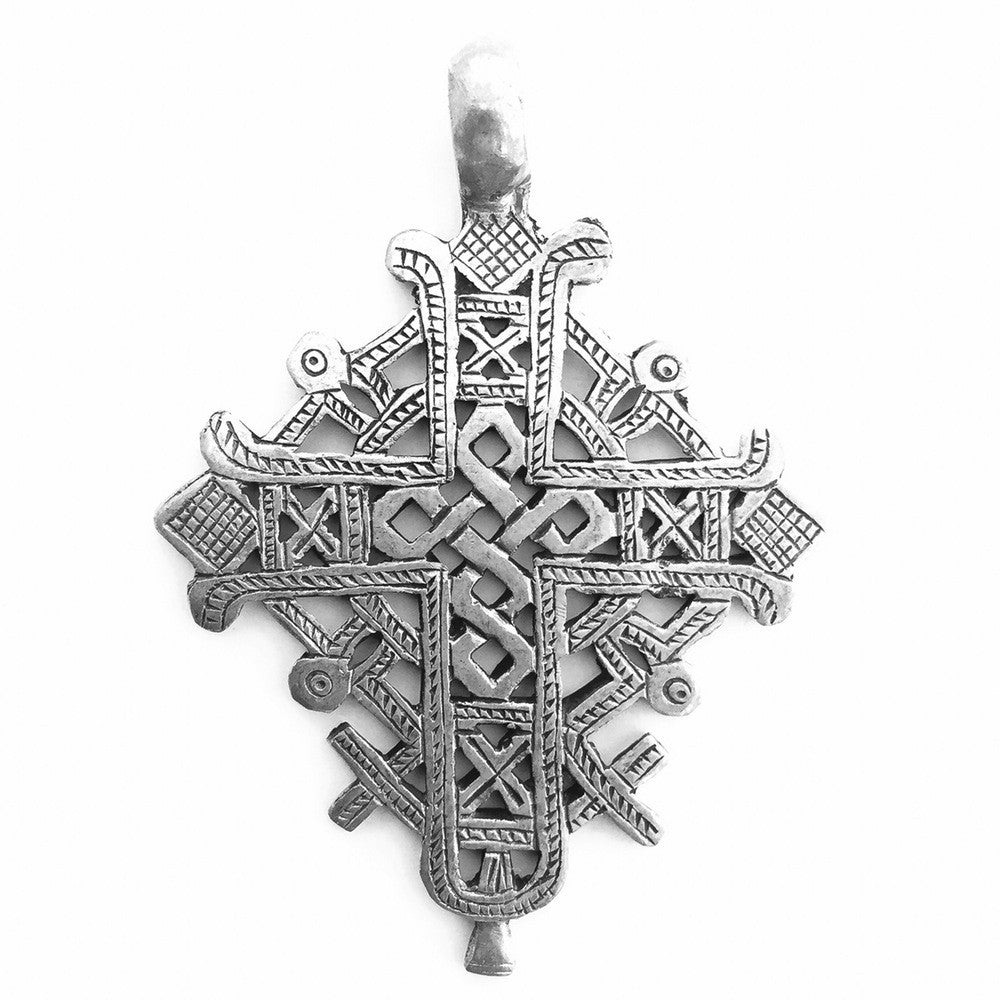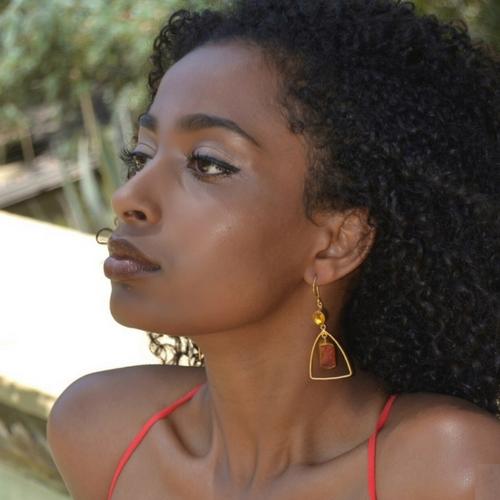Design I Culture I Lifestyle » wakanda jewelry
-
The Royal Gemstone of KEMET
Lapis lazuli is among the earliest gemstones used as early as the 4th millennium BC. The Egyptians utilized lapis lazuli stone in artwork, amulets, jewelry, ornaments and cosmetics.
The KEMET Royalty Collection is inspired by the ancient Egyptians. The collection is designed and handcrafted by artisans steeped in decades of tradition and craft to create gorgeous art jewelry pieces in 18K gold vermeil and lapis gemstone.
Lapis was also used in their religion. Amulets of deities inlaid with lapis lazuli were made of Osiris, Horus, Maat, Tet, Ra, Baste, Ibis and the goddess ISIS. They truly believed in the metaphysical powers of lapis. According to Ancient Egyptian myth, the sun (Ra) rolls across the sky each day and transforms bodies and souls. They believed that Lapis’ gold flecks were like stars in their night-time sky and by meditating on these colors the ancient Egyptians believed that supernatural forces would transform their lives. In the dry, barren land of the Egyptians, this deep cobalt blue color was both a physical and spiritual contrast to their arid desert pallets.
The garments of priests and royalty were dyed with Lapis to indicate their status as gods themselves. To present day, Lapis Lazuli’s deep, celestial blue remains the symbol of royalty and honor, gods and power, spirit and vision. It is a universal symbol of wisdom and truth.
The dung beetle which laid eggs that transformed into larva were seen as an earthly symbol of the heavenly cycle of sun and rebirth. Popular at the time, the scarabs were usually carved from Lapis Lazuli, as its deep, celestial blue remains the symbol of royalty and honor, gods and power, spirit and vision.
Egyptian High Priests used lapis lazuli also for healing purposes. They grounded lapis into powder and swallowed to prevent gallstones. Egyptians also used lapis to prevent sleeplessness and melancholy or fever, as well as an ingredient for eyewash.
Queens
Queen Hetepherus (2600-2500 B.C) had lapis into silver casings for bracelets, ankles and necklaces. Queen Iput had a beetle pendant of lapis. Queen Seneity had a lapis of ovoid beads with discs of gold, carnelian and green feldspar. Queen Nefruhad also a tomb at Thebes containing lapis beads and Queen Ashotep (1650-1567 B.C) owned a diadem crown of lapis, gold, carnelian and feldspar.
Kings
Kings wore pectoral necklaces of lapis and other stones. King Tutankhamen wore a scarab bracelet of lapis symbolizing the Sun God. Elaborate pectorals of Lapis Lazuli, carnelian and also gold covered the pharaohs Osorkon’s chest, while rings and bracelets of the same combination also adorned his arms and fingers. Lapis scarabs were buried in his wrappings, a large one on his heart.
So prized was this gemstone, that at Karnak, the relief carvings of Thutmose III (1479-1429 BC) show fragments and barrel-shaped pieces of lapis lazuli being delivered to him as tribute. King Ramses (1292 B.C) required lapis as a tribute.
Since no mines of lapis exist in Egypt so it is believed that the stone then reached Egypt along the trade routes from Meroe and Afghanistan.
Mombasa is proud to launch the KEMET Royalty Collection, honoring the ancient African kings & Queens and our collective heritage.
Love & Light,
Hanna & Regbe







-
Black Panther: Representation Matters
Black Panther was just released on DVD and I don’t know if my space is even worthy of having such greatness grace my media console. I’m still greeting other chocolate folks with the Wakandan salute. This movie made me extremely emotional. I could barely even speak or articulate my thoughts when I walked out of the theater; and I was definitely upset that I had to go to work the next day. I felt like I needed a day to process what I was privy to experience and the emotions I felt.
Black Panther was more than just a movie filled with black people, beautiful black people (hey Winston!). It was an outward showcase of how some of us view the continent. There were so many layers of culture to be unearthed with each scene. I have never thought of Africa as this desolate, third world continent with too many issues to count. I have always visualized it through a lens that resembled Wakanda. Diverse, intelligent, beautiful, witty, strong, resilient people is how I see Africa and to see that depicted on screen gave me chills. It was like all my dreams of positive, beautiful, and complex black characters had finally come to life on the big screen and I had a hard time coming to grips with my sheer excitement.
The movie had a positive feel. Even when conflicts arose, I still felt a great sense of pride and happiness with what I was watching. Tradition was a big theme throughout the movie. Even with Eric B. Jordan’s character Killmonger character causing an uproar, the people still maintained tradition. Danai Gurira’s character Okoye was clearly against the new king, but her loyalty was to the throne and the king. She was even willing to kill her love to ensure she performed her duties. Healthy relationships that include conflict. Seeing the relationships between Chadwick Boseman’s character T’Challa and Lupita Nyong’o character Nakia; Okoye and Daniel Kaluuya character W’kabi was great for people to see. Not every relationship is going to be perfect, as we saw in this movie. It was nice to see black relationships seen in a normal way and as equals with the freedom to make difficult decisions.
It is known, even if some do not want to acknowledge that Africa has long been and still is a great resource for natural resources but also intellectual assets. People from other continents came to Africa to learn about astrology and math. People of color have been noted to be advanced in these areas and that was depicted with Letitia Wright character, Shuri and the advancements within Wakanda. Wakanda represented to me what Africa could have become if there was no outside force to cause the lingering trauma that has stunted her growth to this moment. There is so much potential within the continent, but it must be actualized and acted upon. There is such pride within this imaginary place because this is how many of us envision Africa resembling had she not been pillaged and misused by the colonizers and greed in general. The technological advances existed within the culture and did not change tradition. It assisted in how they lived, but did not change their dealings with tradition, nature, and cultural ways.
Representation matters. Period. It gave me the chills to see women who looked like me and were stunning. They were strong innately. Their strength and confidence was not seen as aggression. When they expressed their thoughts, it was not seen as anger. There was no ‘angry black woman’ label in this film. These women were just strong because they were multifaceted human beings like everyone else. That was refreshing and uplifting. No over sexualization of the black body, male or female (though the men in this film were quite wonderful to look at). We did not get a more in depth look at the community, but each tribe played their part and worked together. It was refreshing to see a vibrant community.
Black Panther made me proud. It made me happy for my community. It made me happy for the culture. I hope we can harness the positivity and pride brought about by this film and create change within our communities. Wakanda can exist. We just need to put in the work.
WAKANDA FOREVER!
By Amanda White
Amanda is a registered nurse and lifestyle blogger with a love for DIY and living her best life. She likes to think of herself as a multi-passionate woman. She loves diy, travel, food and helping patients own their healthcare experience. "I just want us all to realize we can live our best lives, no matter what your starting point may be. It's time to start living!"

https://www.newstimes.com/news/media/Angela-Bassett-talks-Black-Panther-role-and-1165120.php?jwsource=cl











